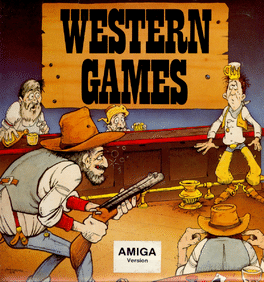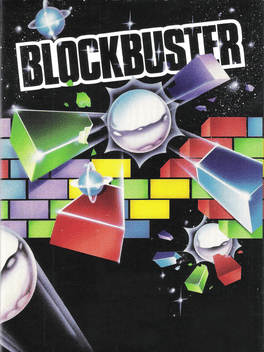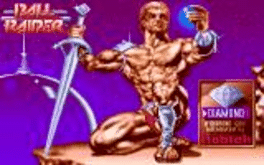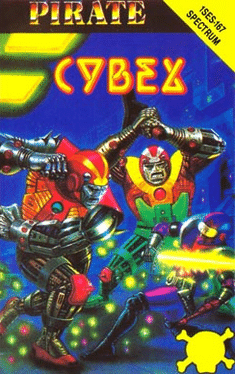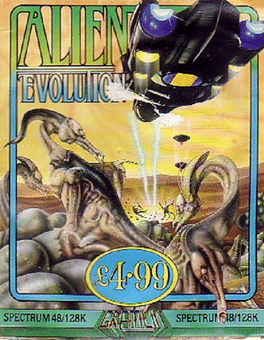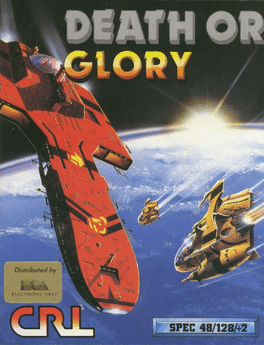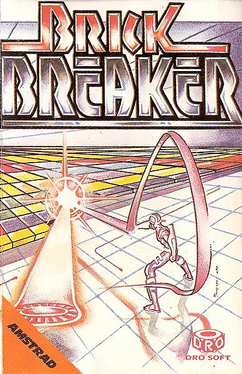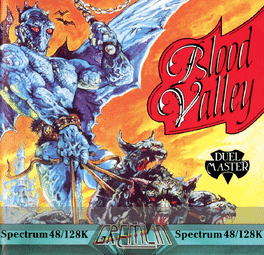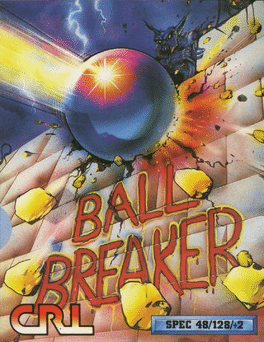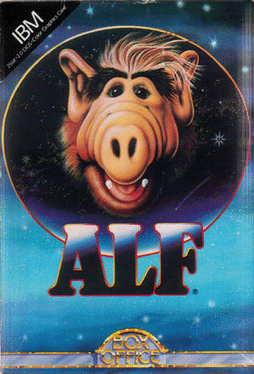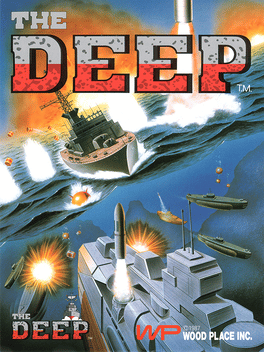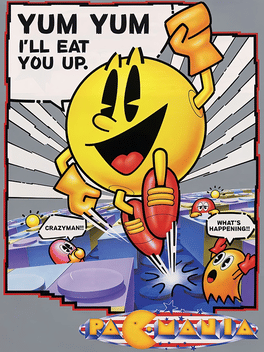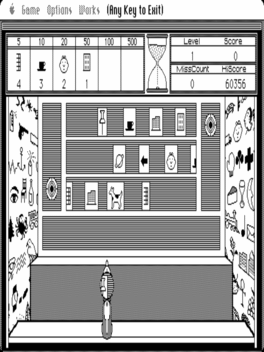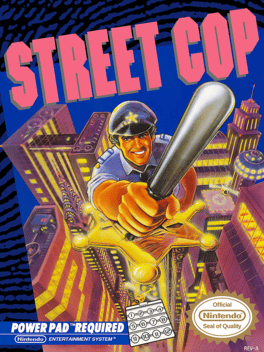New Game Boy Games - Page 230
-
Western Games
1987
-
Blockbuster
1987
Blockbuster
1987
BBC Microcomputer System Commodore C64/128/MAX ZX Spectrum Atari ST/STE Acorn Electron DOS Amiga Amstrad CPCBlockbuster, also known as Impact in Europe, is a Break Out clone. The user controls a paddle and needs to catch a ball with the paddle each time it comes down. When the ball hits a brick, it is destroyed (unless it's made indestructible). Sometimes, a bonus will come out of the brick. This adds to the 'bonus score'. When the player collected one or more bonuses, they may 'release' them, and they receives a powerup. Each 'bonus score' has a different powerup: the most powerful powerups need the largest number of bonus points. Impact comes with a lot of levels and a level editor. -
Impact
1987
-
Ball Raider
1987
-
Ghostly Grange
1987
-
Cybex
1987
Cybex
1987
Guide droids to collecting pieces of the scrambeled shut down code for the forcefield in this isometric 3D game for the ZX Spectrum -
Alien Evolution
1987
-
Death or Glory
1987
-
Classic Muncher
1987
Classic Muncher
1987
OK kiddies, let's play a little game. I'll start describing the scenario of this cute little original game by Bubble Bus, and you tell me when you think you can guess the game before it loads All right ? Here we go: "... Living in a haunted mansion isn't much fun, especially when the ghouls take over. Muncher man must gather up all the food before the ghouls get him !' No, Muncher Man does not come from Munich, and I don't know why he doesn't get his food from the nearest McDonalds. Maybe he's a trendy veggie? I see you're going to need further clues. Muncher Man's house looks suspiciously like a maze, with lots of little round bits of food in it (Not yet! Wait a bit). You have to wander about the maze, eating the food, and avoiding the ghouls (now you can start guessing). When you eat a special pill (left over from a previous police raid), you can chase and eat the ghouls (but go easy on the spirits), getting a large bonus from your local exorcist as you do so.(You must have it by now). Fruits pop up in the ma -
Brick Breaker
1987
Brick Breaker
1987
star 4Our mission is to destroy all the walls on the screen for a total of 25. In principle, we can start the top 15, choosing the desired before starting the game. In each of these walls there are different pods of bricks, some of which you will assist us if we catch them when they fall . -
Blood Valley
1987
Blood Valley
1987
ARCHEULT, el terrorífico y poderoso líder del Firedrake, ha ordenado que te den caza y te sentencien. Tu única posibilidad de supervivencia es escapar del Valle. ¿Posees la valentía y los recursos suficientes para vencer no sólo a tu adversario sino también a todas las criaturas y seres tenebrosos del mundo fantástico de Orb? -
Ball Breaker
1987
-
Jinks
1987
Jinks
1987
You are about to embark on one of the most dangerous missions of your career. As a renowned Star Fleet pilot, you have been selected to command an exploration party in a journey across the galaxy to investigate the mysterious planet JINKS. An enigma for centuries, JINKS is a lush, resource-rich world, and could be the key to the desperate need for human expansion in space. It is apparently capable of supporting life, yet it is curiously uninhabited--or is it? A routine research mission goes haywire when scouting your probe across the planet's surface leads you and your crew into a deadly game of cat and mouse. Can you escape from these fiendishly clever traps before your probe and its occupants are miniaturized or annihilated? -
Bone Cruncher
1987
Bone Cruncher
1987
In Bone Cruncher the player takes the role of Bono, a dragon who makes a living by selling soap. His secret of success: he uses skeletons as ingredients. To restock, Bone has to collect more skeletons by traveling through a castle with 22 scrolling levels. -
Amegas
1987
Amegas
1987
Amegas is a wild, fast paced game written to take full advantage of the Amiga's amazing speed, graphics and sound! Bounce, shoot, slam, and juggle your way through 40 challenging screens. Every screen has its own surprises and it will take quick reflexes to deal with all the action, sounds, and sights! For the Amiga 500, 1000 and 2000. -
The Deep
1987
The Deep
1987
In The Deep the player takes the role of a ship which has to defend itself against a variety of underwater enemies, e.g. u-boats or jellyfish with weapons. All the enemies launch missiles or mines at the boat which can be dodged by moving left or right. Water bombs can be dropped to get rid of the enemies - but there are only eight available which slowly refill over time. Sometimes a helicopter drops crates which include useful extras like smart bombs, steering rockets or additional speed. The ship can also turn into a submarine to collect things under the water. Every screen has a different objective, e.g. collecting an orb, bombing an underwater station or destroying a powerful ship. -
Pac-Mania
1987
Pac-Mania
1987
star 5.3Pac-Mania is a variation on the game Pac-Man. You need to guide Pac-Man around a maze and eat all of the dots on the board in order to proceed on to the next round. Numerous, multi-colored ghosts also roam the maze trying to stop you. If you eat one of the power pellets in the maze, the ghosts will temporarily turn blue and run from you. Pac-man can earn bonus points by eating the ghosts when they are in this state. The maze is now in 3-D and is larger than screen which will scroll to follow the action. To help get out of tight spots, Pac-Man now has the ability to jump. But be careful, because some of the ghosts have learned this trick as well and you could end up in a mid air collision! -
Cairo ShootOut!
1987
Cairo ShootOut!
1987
A shooting gallery style game, except instead of aiming with a cursor, players must line their shots up with the scope at the bottom of the screen. Also includes a small puzzle element. -
Street Cop
1987
Street Cop
1987
One of the few NES games that uses the Power Pad. You play a cop who must chase down and catch the criminals. The game takes you through the streets of a city, where you must turn corners and keep running to catch the bad guys. You use the NES power pad to run through the streets, faster you run faster the cop will give chase. You use the controller to use your nightstick to apprehend the criminal.
